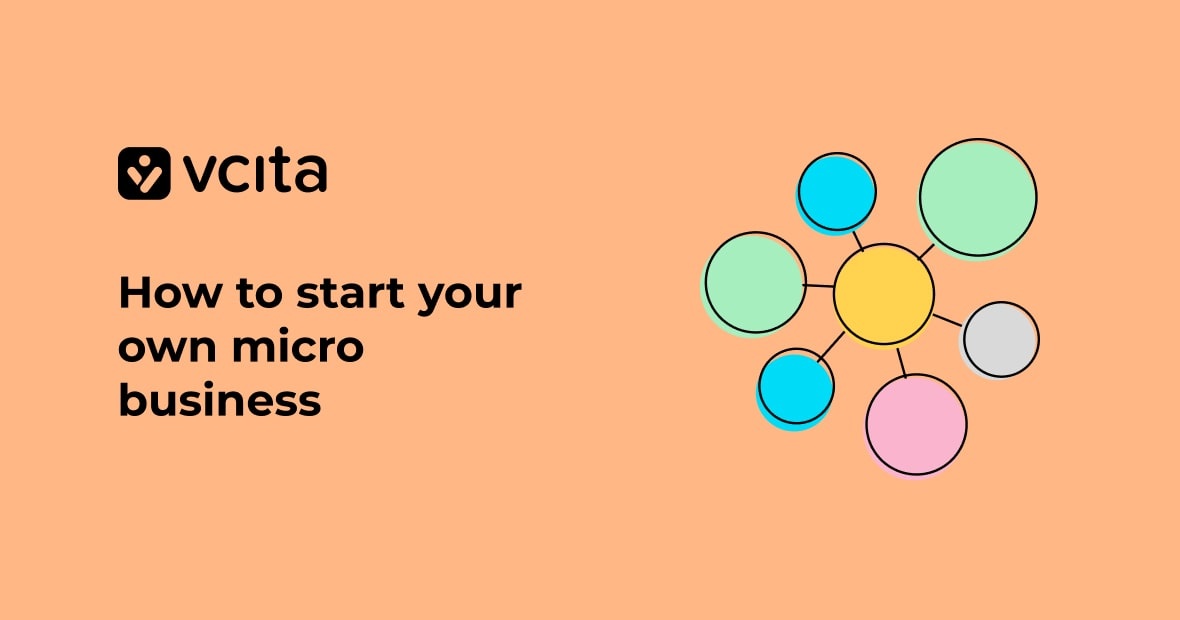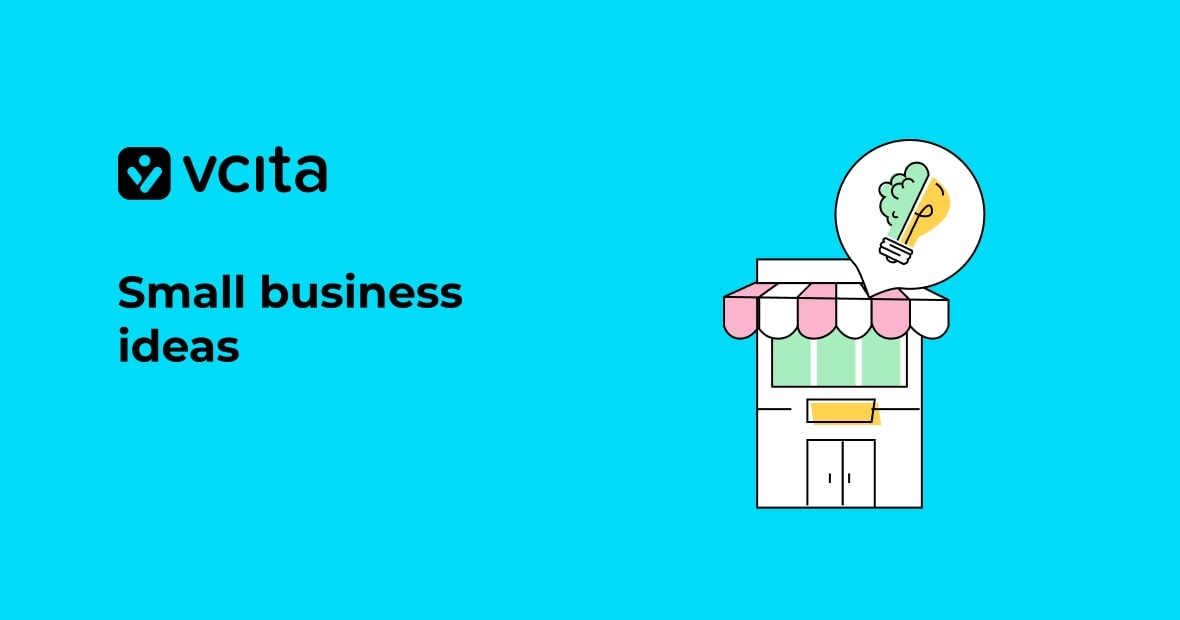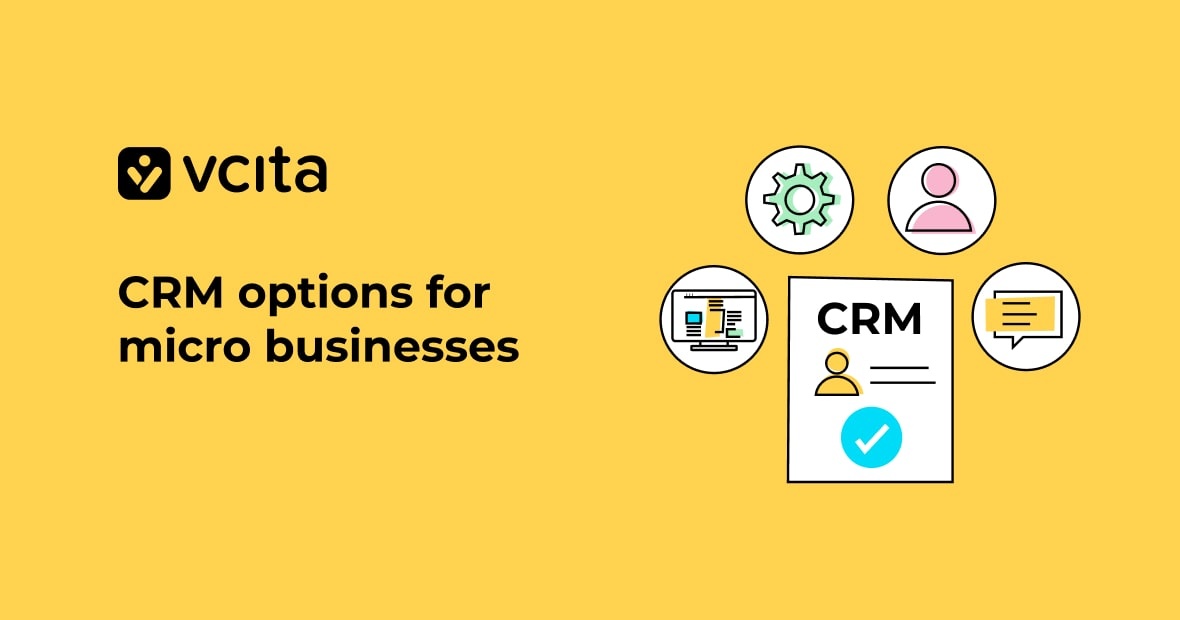You’ve probably heard the term “micro business” thrown around, but do you know what it actually means? It describes exactly the kind of small-scale operation you might want to start as a micro entrepreneur.
But before you hit the road with a side hustle or micro business, you need to understand some key concepts like business structure, products and services, and target markets. You’ll operate differently than larger businesses, with lower overhead costs and a more direct connection to local customers that you can turn into a business advantage.
This article will break down everything aspiring micro business owners like you need to know to turn your dream into reality.
What is a micro entrepreneur?
A micro entrepreneur is someone who starts and operates a micro business. They are usually self-employed business owners who provide goods or services to meet the needs of a local community or target market.
Micro businesses operate on a small scale. As a micro business owner, you’ll likely work from home or a small office to keep overhead costs low, and offer specialized products or services to a niche market. It’s a great way to turn your passion or side hustle into a sustaining business.
Micro business definition: what makes them different from other businesses?
The definition of a micro business is a small-scale enterprise with less than 10 employees and under $250,000 in annual revenue. If you’re running a micro-business, you might also be called a micro entrepreneur.
Size and scale
Micro businesses usually are smaller both in scale and scope compared to most small businesses. They focus on a specific niche market, or provide specialized products and services to a local community.
This allows them to build close relationships with their local community and target markets, which is part of the reason that micro businesses rely heavily on word-of-mouth marketing and referrals. While technology and social media help reach new clients, personalized service and connections remain most important.
Finance and risk
Micro entrepreneurs often start their business as a side hustle while keeping their day job. Once the business is stable, some transition to running it full time. Micro businesses have low overhead costs, so don’t require much by way of startup capital and are ideal for testing out business ideas without much risk. Microfinance programs and crowdfunding make it easy to start a micro business, or you can raise funds from individual backers.
Community impact
In developing countries, micro businesses are important triggers for economic growth and independence. They empower business owners to earn a living and support their communities. Although on a small scale, micro businesses are a type of business that can transform lives and communities.
Coming up with micro business ideas, products, and services
As a budding micro entrepreneur, the first step is coming up with business ideas that match your interests and skills. Some popular micro business ideas include:
- Offering a specialized, personal local service, like dog walking, house cleaning, or ridesharing. These types of ventures have low overhead costs and can be operated as a sole proprietorship.
- Selling handcrafted goods or products like artisanal foods, clothing, jewelry or stationery. You can sell these at local craft fairs and farmers markets, or online to reach potential customers in your community and beyond.
- Providing professional services such as web design, marketing consulting, or accounting. If you have experience and expertise in a particular field, consider starting a freelance micro business.
- Running an online venture like an ecommerce store, affiliate marketing site, or blog. The startup costs are low, but you’ll need to build up web traffic and an email list to establish a base of loyal customers.
- Delivering food and beverage services, like running food trucks, operating a catering service, working as a personal home chef, or helping people with meal prep.
Once you have some micro business ideas, determine what products or services are most in demand in your community, and think about which skills, interests, and experience you have which you use to meet those needs. This will help you narrow down a longlist of ideas into just a few realistic possibilities.
From there, evaluate the potential market and competition to determine the feasibility and scalability of each of your micro business ideas. Can you operate as a side hustle at first before transitioning to full-time? Do you have a niche that will allow you to stand out? This will help you decide on the best focus for your micro-business.
Establishing your micro business’ structure and model
Now you’ve got your business idea and you’re ready to open your business, you need to take a few important steps to make sure that it’s officially established and that you’re set up for success.
One of the first things you need to decide is how to structure your business. Your options are:
Sole proprietorship
This is the simplest structure, where you are the sole owner and manager of the business. The business and owner share the same legal identity, so you’re personally liable for all debts and obligations. The benefit is low cost to set up and minimal reporting requirements. Many micro businesses start as sole proprietorships.
Partnership
If you have a partner or co-founder, a partnership allows you to share ownership, responsibility and liability. You’ll need a partnership agreement to outline each partner’s responsibilities, equity and decision making authority. Partnerships require more legal paperwork, but may provide more opportunities for growth.
Limited Liability Company (LLC)
An LLC provides liability protection for business owners while allowing flexible management options. You file articles of organization with your state, but have more options in how you structure management. Owners, called members, can participate in management or appoint managers. LLCs require more expense and paperwork, but provide more legal protection.
Preparing a business model
Once you determine the business structure, it’s important to prepare a business plan that details your business model. This describes how your company will create, deliver, and capture value. You should include:
- Your mission and vision: Why you’re in business and what you want to achieve.
- Your target market: Identify your potential customers and describe how you will meet their needs, which is your value proposition.
- Your products or services: Determine what you will sell and how you will price, distribute, and market your offerings.
- Your operations plan: Outline how you will actually run the business on a daily basis, including key business processes, resources, and tools needed.
- Your financial plan: Create revenue and expense projections to determine if you can generate a profit, and list key assumptions and metrics to monitor performance.
Understanding your target market and community
As a micro business owner, identifying your target market and serving your local community are key to success. Focusing on a specific customer base allows you to tailor your business to meet their needs. You need to conduct market research to determine potential customers, analyze trends, and find opportunities.
Define your ideal customers
A target market refers to a group of consumers most likely to buy your goods or services. These are your ideal customers. Defining them helps determine how to reach customers and what to offer. For example, if you’re opening a dog grooming business, your target market may be middle-aged pet owners within a 5-mile radius.
Understand your local community
Micro entrepreneurs often start by serving their local community. Study your area to spot needs and potential clients. Check sites like Nextdoor, Facebook Groups, and neighborhood associations to find popular events, causes or issues. Starting locally allows you to build a customer base through word-of-mouth. You can then expand into surrounding regions.
Consider your ability to scale
Assess your business’s capacity to determine how large of a market to target. If you’re operating alone, focus on a small, concentrated area. If you have employees or plan to scale, you may target an entire city or county. The key is balancing growth with quality. Don’t expand so quickly that you can’t provide good service.
Operating and managing your micro enterprise
The ways that you operate and manage your enterprise will determine its success or failure. You’ve already created a business plan, so now you need to work out what steps to take to achieve it.
Financial management is a key aspect of operating a successful micro business. Track income, expenses, cash flow, and key metrics to understand your business’s financial health, and keep overhead costs low by starting small and only spending on essentials. Consider using low-cost tools and software to help manage finances more easily. You’re responsible for all the financial aspects of your business, so stay on top of bills, accounting, and taxes.
Hiring efficiently and fostering a healthy work environment are also important in a micro enterprise. Only bring on employees if truly needed, to keep costs under control, but when you do, you should offer competitive pay and benefits so you can find and retain good workers. Promote a collaborative culture where everyone feels heard and respected. Your team will be small, so show that you value each employee and the role they play in your company’s success. Also, take advantage of productivity tools to encourage your small team to achieve big things. For example, a CRM can help the support and operation team handle customer inquiries more effectively and smoothly, while a clock in clock out app helps your HR team by automating payroll and labor costs.
Micro business financing options
As a micro entrepreneur looking to start your own business, securing financing is critical. The good news is there are several options to access funding for your micro business.
Bank loans
Traditional bank loans are a popular choice for small business owners. Banks offer both secured loans (using assets as collateral) and unsecured loans. Unsecured loans typically have higher interest rates. You’ll need good credit, financial statements, and a solid business plan to qualify.
Online loans
Online lenders like Kabbage and OnDeck also offer small business loans and lines of credit. The application process is faster than a bank, but interest rates are often higher. These loans are a good option if you need quick access to cash, have been turned down by a bank, and you’re confident you can repay the loan within the term.
Credit cards
Business credit cards are an easy way to access revolving credit for your micro business. You can earn rewards and keep your spending separate from your personal cards. Look for cards with low APRs, no annual fees, and rewards in categories where you spend the most. Pay the balance in full each month to avoid interest charges.
Crowdfunding
Crowdfunding platforms like Kickstarter and Indiegogo allow you to raise money from individual backers. You propose your business idea or new product and set a fundraising goal. Backers pledge money in exchange for rewards like samples, first access to your product, or equity in your company. Crowdfunding works best for businesses with an innovative product and built-in customer base.
Grants
Government agencies, nonprofits, and private organizations offer grants for small and micro businesses. Grants do not need to be repaid, but they are highly competitive. Do research to find grants you may be eligible for. Having a well-written business plan and financial projections will strengthen your application.
Growing your micro business into a larger business
Once you’ve established your micro business and built up a loyal customer base, you may be ready to expand to bring in more revenue and increase your profits. Perhaps your goal is to turn your side hustle into a full and stable income? Whatever your goals, here are a few common ways for micro business owners to scale up their operations.
- Add more offerings
If you offer a product or service that your customers love, consider expanding into related offerings. For example, if you run a bakery, you might start selling coffee and sandwiches in addition to pastries. Or if you offer landscaping services, you could expand into lawn mowing and gardening. Growing your product line or service offerings is an easy way to boost revenue from your existing customers.
- Expand into new locations
Another option is to open additional locations or increase the geographical area you’ll cover, so you can reach new potential customers. Replicating a successful micro business in other areas is a great growth strategy. You’ll need to make sure you have the resources and management capabilities to operate multiple locations or in a wider area.
- Increasing marketing and advertising
Don’t underestimate the power of marketing to help your micro business expand. As you gain more experience, you can dedicate additional resources to advertising, social media marketing, content creation, and search engine optimization. These efforts will raise brand awareness and attract new potential customers. While marketing requires an investment of both time and money, increased visibility and sales can help propel your micro business into a thriving small business.
Growing a micro business into a larger business is challenging, but also rewarding. With careful planning and by leveraging the right growth strategies for your company, you can expand your operations and take your business to the next level.
Micro entrepreneur FAQs: your most pressing questions answered
Here are the answers to some of the most frequently asked questions from aspiring micro entrepreneurs.
What exactly is a micro business?
A micro business is a very small business, typically run by just one or a few people. Micro businesses operate on a small scale, with low startup and overhead costs. They are well suited for micro entrepreneurs looking to start a side hustle or generate extra income.
Who are micro entrepreneurs?
Micro entrepreneurs are small business owners who start and operate micro businesses. They come from all walks of life and backgrounds. The key traits are an entrepreneurial spirit, willingness to take risks, and ability to operate with minimal resources. Many micro entrepreneurs run their business as a side hustle alongside a full-time job.
What business structure should I choose?
For a micro business, a sole proprietorship is typically the simplest structure. It has minimal paperwork and legal requirements to set up. You and your business are one and the same. Alternatives include partnerships and LLCs, which offer more legal protection but also more complexity.
How do I identify my target market and potential customers?
Focus on your local community and think small. Look for groups that would benefit from your products or services. Talk to people, ask questions, and build connections. Your target market could be neighbors, community groups, local businesses, or niche demographics. Start by selling to people you know, then ask them to spread the word.
How do I finance my micro business?
Micro businesses typically need little startup capital. You can finance your business by:
- Using your own savings and personal funds
- Borrowing money from friends and family
- Crowdfunding on sites like Kickstarter or Indiegogo
- Applying for small business grants and loans targeted at micro entrepreneurs
- Starting as a side hustle, then using profits to fund growth
The key is to start small and minimize expenses. Let your business grow organically as revenue increases. With hard work and persistence, micro entrepreneurs around the world have built successful businesses this way.
Your micro business can bring in major profits
Micro businesses operate on a small scale, but that doesn’t mean they can’t make a big impact. Many micro entrepreneurs start a side hustle that grows into a larger business over time. Others choose to remain small, serving a local community or developing countries. Either way, starting a micro business allows you to be your own boss and fill a need in your local community. With the right idea and execution, a micro business can be a pathway to financial independence and a meaningful career.




























